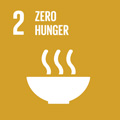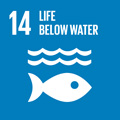- Docente: Massimiliano Petracci
- Credits: 4
- SSD: AGR/20
- Language: Italian
- Teaching Mode: In-person learning (entirely or partially)
- Campus: Cesena
- Corso: Second cycle degree programme (LM) in Food Science and Technology (cod. 6788)
-
from Feb 19, 2026 to May 28, 2026
Learning outcomes
At the end of this course, students will be aware of how seafood quality is affected by production and harvesting systems as well as of empirical and analitycal methods to assess product quality.
Course contents
Classification of seafood. Statistics on global production of fish products according to the production system (fisheries and aquaculture). Main species of pelagic, demersal, diadromous and freshwater fish, crustaceans and mollusks. World, European and domestic data on production and consumption of seafood.
Chemical composition of seafood. Structure of finfish muscles. Characteristics of proteins and lipids and variability on its content and composition. Composition of edible portion of crustaceans and mollusks.
Freshness of seafood. Main degradative processes during storage. Evaluation of freshness/quality by sensory empirical indicators and standardized criteria and analytical chemical/biochemical, physical and microbiological parameters.
Main fishing and aquaculture production systems. Major fishing systems as related to seafood species. Aquaculture systems for mussels, clams, oysters, trout, sea bass and sea bream. Critical issues and innovations in breeding of other fish species.
Peri-mortem phases and quality of fish products. Harvesting, killing/stunning, bleeding and evisceration. Implications of refrigeration and freezing methods on seafood quality.
Seafood processing. Main principles and techniques. Drying, salting, smoking, marination, canning and surimi technology. Packaging and labelling of seafood products.
Readings/Bibliography
Lecture slides and notes
Reference books:
Cataudella S., Carrada G.C. (2000). Un mare di risorse. Consorzio Uniprom
Gokoglu N., Yerlikaya P. (2015). Seafood chilling, refrigeration and freezing: science and technology. Wiley-Blackwell
Grazyna Daczkowska-Kozon E., Sun Pan B. (2010). Environmental effects on seafood availability, safety, and quality. CRC Press.
Rehbein H., Oehlenschlager J. (2009). Fishery products: Quality, safety and authenticity. Wiley-Blackwell.
Venugopal V. (2005). Seafood
processing: Adding value through quick freezing, retortable
packaging and cook-chilling. CRC Press.
The book chapters useful to integrate the teaching material will be reported in the last slide of the respective lectures (Power point) made available through the Virtuale platform.
Teaching methods
Frontal lectures, seminars, demonstration activities and laboratory practises held in classrooms, laboratories and guided visits to processing and marketing plants of seafood.
As concerns laboratory practises of this course unit, all students must attend Module 1, 2 online, while Module 3 on health and safety is to be attended in class. Information about Module 3 attendance schedule is available on the website of your degree programme.
Assessment methods
The oral examination will consist of an interview lasting about 25-30 minutes. During this interview, theoretical and applicative knowledge of the student will be verified. In particular, it will be evaluated clarity in the presentation of the contents, in-depth knowledge and connection between the main topics, appropriate use of the specific terminology and language of the sector.
In details, here is the score grid and related criteria for oral examinations:
- a very thorough knowledge of the topics addressed in the course, together with high skills of critical analysis, connection and a sure command of specific terminology will be evaluated with the maximum score (30-30L)
- a thorough knowledge of the topics addressed in the course, together with good analytical and critical skills and the possession of a sure command of specific terminology will be evaluated with good marks (27-29)
- a technically adequate preparation and a sufficient analytical capacity, even if not particularly articulated, expressed in a correct language, will produce fair evaluations (23-26)
- sufficient preparation and capacity for analysis, expressed in a language which is barely formally correct, will determine the sufficiency (18-22)
Students with learning disorders and\or temporary or permanent disabilities: please, contact the office responsible (https://site.unibo.it/studenti-con-disabilita-e-dsa/en/for-students) as soon as possible so that they can propose acceptable adjustments. The request for adaptation must be submitted in advance (15 days before the exam date) to the lecturer, who will assess the appropriateness of the adjustments, taking into account the teaching objectives.
Teaching tools
Power point slides of the lectures will be available through the Virtuale platform.
Lab practises will be performed in "Animal production" laboratory of the Master in Food Science and Technology.
Office hours
See the website of Massimiliano Petracci
SDGs




This teaching activity contributes to the achievement of the Sustainable Development Goals of the UN 2030 Agenda.
